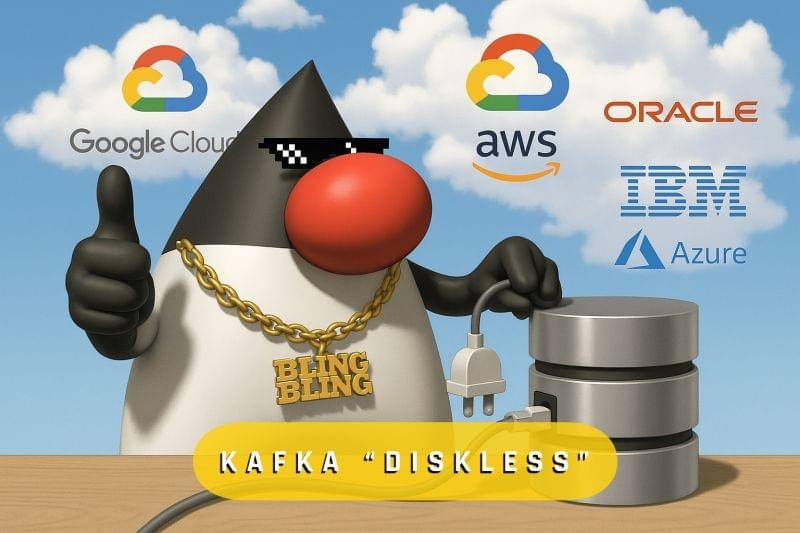🚀🧊 KAFKA “DISKLESS” TOPICS— WHAT IT IS, WHEN TO USE IT, AND WHAT TO WATCH
🚀🧊 KAFKA “DISKLESS” TOPICS— WHAT IT IS, WHEN TO USE IT, AND WHAT TO WATCH

TL;DR
Running Kafka with little-to-no dependence on local disks means decoupling compute from storage: brokers act as stateless/ephemeral compute while data lives in remote/object storage (and/or a minimal local cache). You get faster recovery, elastic scaling, and simpler ops—but you must budget for network, tail latency, and costs.
🔸 WHAT “DISKLESS” MEANS
▪️ Brokers don’t rely on large local SSDs for the full retention window
▪️ Data durability shifts to remote storage (e.g., object storage) with brokers using cache + fetch on demand
▪️ Brokers become replaceable (pets → cattle), improving operability and autoscaling
🔸 WHY TEAMS CONSIDER IT
▪️ Faster broker recovery: less time rebuilding large local logs
▪️ Elasticity: scale compute up/down without shuffling terabytes across nodes
▪️ Infra flexibility: run comfortably on Kubernetes/spot instances
▪️ Ops simplicity: fewer disk-related incidents (failures, rebalancing pain)
🔸 HOW IT CHANGES YOUR ARCHITECTURE
▪️ Compute–storage decoupling: Kafka brokers focus on serving traffic; storage layer handles durability
▪️ Caching strategy: hot partitions benefit from local cache; cold data comes from remote storage
▪️ Network-first thinking: throughput, latency, and SLOs depend more on your network and remote store
🔸 TRADE-OFFS & GOTCHAS
▪️ Latency: cold reads can be slower; watch p99/p999 tail latency
▪️ Network ceiling: broker NICs and egress limits become your new bottleneck
▪️ Costs: object storage + egress + more network can offset SSD savings
▪️ Operational guardrails: set clear retention tiers, cache sizes, and backpressure limits
🔸 WHEN IT SHINES
▪️ Bursty & spiky workloads needing rapid scale-out/in
▪️ Multi-AZ / Multi-region designs where storage durability is centralized
▪️ Data lakes & analytics where long retention lives in object storage anyway
▪️ Kubernetes-first platforms seeking stateless brokers
🔸 WHEN TO BE CAUTIOUS
▪️ Ultra-low latency pipelines with strict p99 SLOs
▪️ Heavy cross-AZ or cross-region traffic (egress bills + latency)
▪️ Clusters with limited network headroom or noisy neighbors
🔸 CHECKLIST TO GET STARTED
▪️ Define RPO/RTO objectives and SLOs (p95/p99 targets)
▪️ Right-size broker cache and socket buffers; validate read-ahead behavior
▪️ Load-test hot vs. cold reads and observe cache hit ratio
▪️ Instrument remote fetch latency, throughput, egress, and costs
▪️ Simulate broker kills to verify recovery and autoscaling workflows
TAKEAWAYS
▪️ Kafka “diskless” = stateless brokers + remote/object storage for durability.
▪️ You trade disk complexity for network & storage complexity—measure, don’t guess.
▪️ Best for elastic, cloud-native platforms; be mindful of tail latency and egress costs.
▪️ Success = right caching strategy, strong observability, and SLO-driven tuning.
#kafka #diskless #streaming #CloudNative
See: https://bit.ly/d1skless